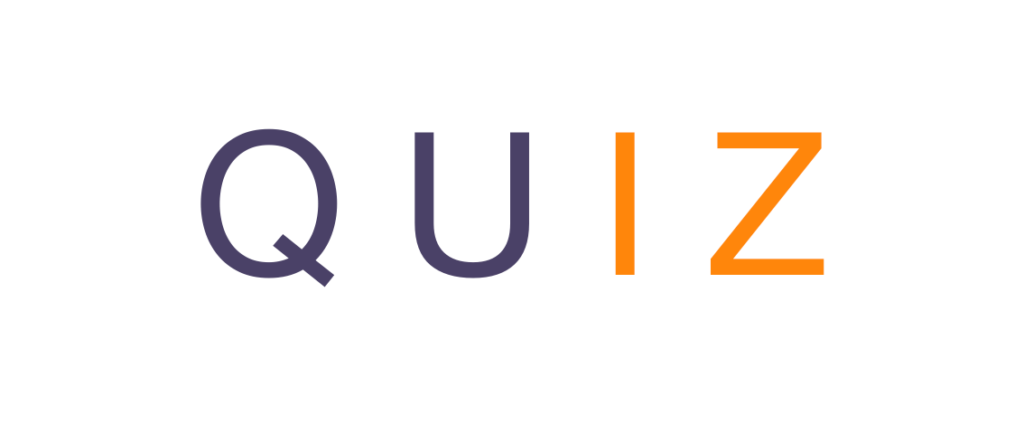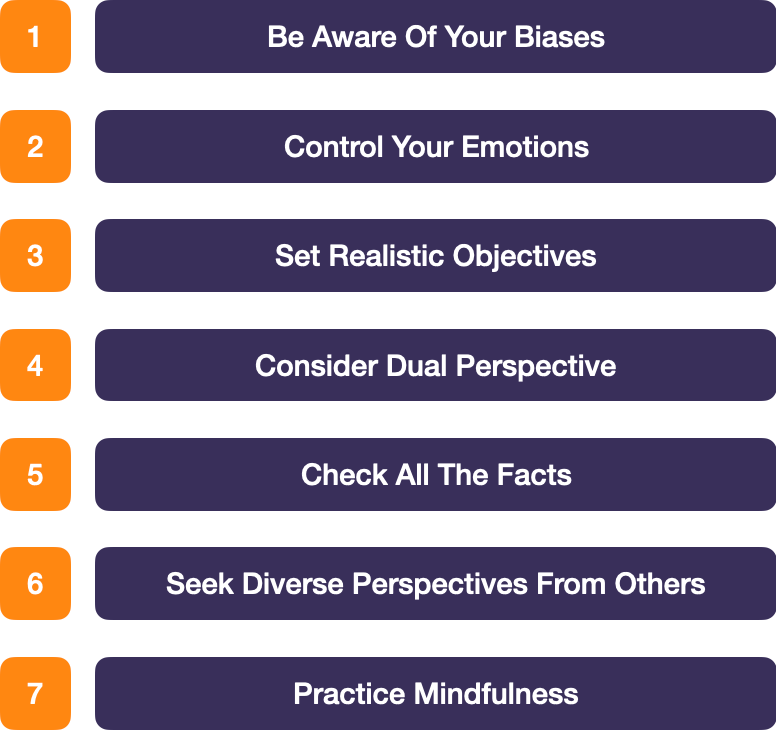Actionable Steps To Avoid The Pitfalls Of Wishful Thinking And Make Fact-Based Decisions
John: “I do not understand how it happened. That position was a perfect fit for me and their team?”
Anna: “Could it be that there were some other good candidates?”
John: “Of course, but I have worked in a very similar position for more than three years, I just do not understand what went wrong”
Anna: “Did the interview go smoothly? Maybe there were some questions that you did not answer quite well?”
John: “I mean…yes, there were, but I do not assume that others answered all of them correctly either”
Anna: “Were the questions specific?”
John: “Not all of them. Some were about recent changes in the market and the technical know-how required, but I thought that it would be identical to what we have”
Anna: “Most importantly, don’t give up. I am sure you will manage it better the next time. However, I would highly recommend you not to rely solely on the possible favorable outcome just because you worked in a similar position and it went well before. Spend time preparing specifically for the role, researching the company, and so on. I am sure, that if you properly plan and prepare, you will definitely get the desired job”
John: “Thank you for the advice, that actually makes sense when I think of it now. And…, I am very sorry once again that we need to shift the celebration, I really thought it would be different.”
We all happen to be in the position of John when our wishes, emotions, hopes, and beliefs overshadow the practical steps and needs to achieve the desired result. This is exactly the consequence of wishful thinking, a cognitive bias that makes us believe that our aspirations and positive outcomes are more likely to happen simply because we want them to, often at the expense of clear judgment and realistic planning. Wishful thinking impacts our decision-making process by favoring options that support our desires and forces us to ignore alternatives and potential challenges.
In this blog post, we will explore the nature of wishful thinking, take a quiz to determine your current level of wishful thinking, highlight the common pitfalls, elaborate on the actionable steps to avoid them, and even cover how you can make the best out of wishful thinking.
Defining wishful thinking

To define what wishful thinking is, let’s first refer to the definition.
Wishful thinking is a cognitive bias that leads to decisions and the formation of beliefs driven by hope, wishes, preferences, and not reality, rationality, and evidence.
Another example of wishful thinking is investing in a friend’s business. Despite that the start-up has no business plan drafted, and no clear path to profitability, you decide to invest in the business significant amount of money. You make that decision because you know your friend is a very ambitious and hardworking person. This is a simple example of wishful thinking where you make a decision based on your emotional attachment to your friend, believing in him as a potentially good entrepreneur, rather than by analyzing the real potential of the start-up and proper financial planning behind it.
All of us tend to engage in wishful thinking in different situations in life. Let’s explore some of the main areas where it happens the most:
- Personal And Professional Decisions: You may find yourself relying on wishful thinking when deciding on relocation, purchase of a new car, or long-term investment. In professional life, wishful thinking may impact the project timeline or the outlook on the potential success of a new venture.
- Goal Setting: The creation of overly ambitious targets is often driven by optimism rather than realistic assessment. By creating unrealistic and over-optimistic goals, you may find yourself disappointed when the goals are not met, thus potentially also draining your self-esteem.
- Health And Wellness: Wishful thinking can cause problems with health if the treatment or investigation is delayed and the symptoms are ignored for a long period.
- Financial Planning: In financial planning, many aspects, like market volatility, and in-depth risk assessment are required. Targeting high returns without proper due diligence can lead to financial shortfalls.
- Interpersonal Relationships: Relationships are an area of life, where people mainly make decisions based on their feelings. While feelings are not necessarily bad, they may lead to overlooking some red flags or lead to unrealistic expectations that are driven by hope, rather than any proof.
- Learning And Education: When acquiring a new skill, people often expect rapid mastery without considering the required practice and time needed to actually develop that skill.
Assess your wishful thinking

Before we go into exploring the common pitfalls of wishful thinking and steps to avoid them, I would encourage you to take part in this short quiz to get a feeling of what level of wishful thinking you have right now. Add up your points at the end to see your results. Answer honestly based on your experience.
1. When I set goals, I usually:
- A) Dream big without considering the steps needed (1 point)
- B) Set inspiring goals but often forget about detailed planning (1 point)
- C) Set detailed goals but occasionally miss some important nuances (2 points)
- D) Carefully consider details and possible challenges, ensuring each step is attainable (3 points)
2. Do I often seek constructive feedback from others before making a decision?
- A) Rarely, I trust my own judgment (1 point)
- B) Occasionally, but I prefer to rely on my own views (1 point)
- C) Often, I ask for feedback but tend to make final decisions on my own (2 points)
- D) Often, I value diverse perspectives and incorporate constructive feedback into my decisions (3 points)
3. Do i regularly review and adjust my plan based on new information?
- A) No, I stick to my original plan for consistency (1 point)
- B) Rarely, I adjust my plans only if something really significant happens (1 point)
- C) Occasionally, I make adjustments when I consider something important (2 points)
- D) Yes, it’s my habit to review and adjust my plans regularly (3 points)
4. How do i treat setbacks and failures?
- A) Get upset, but believe things will eventually work out (1 point)
- B) Feel discouraged and take a while to move on, occasionally learning from them (1 point)
- C) Feel disappointed but try to learn and move on wiser (2 points)
- D) Learn from them immediately, adjust my approach, and view them as growth opportunities (3 points)
5. When I make a financial decision, do i:
- A) Invest based on optimism and gut feeling (1 point)
- B) Mix some research with optimism, but mostly take risks without full picture (1 point)
- C) Usually perform detailed research but occasionally make optimistic decisions (2 points)
- D) Do proper due diligence by considering all risks and rewards, making fact-based decisions (3 points)
6. How often do i practice mindfulness and self-reflection?
- A) Rarely, I don’t consider it that useful and do not have time for that (1 point)
- B) Occasionally, but not as regularly as I probably should (1 point)
- C) Sometimes, but I could be even more consistent (2 points)
- D) Regularly, it’s part of my routine that helps me to stay focused and realistic (3 points)
7. Do I tend to ignore the red flags and warning signs when planning something?
- A) Yes, I focus mainly on the positives (1 point)
- B) Occasionally, when I notice them I often don’t act on them immediately (1 point)
- C) Sometimes, I take them into account but may act not in a necessary way (2 points)
- D) No, I always consider potential problems and address them as soon as they occur (3 points)
Results:
7-11 Points: Wishful Thinker. You rely heavily on wishful thinking, neglecting practical steps and realistic planning. Take your time to learn about the pitfalls of wishful thinking and strategies you can implement to avoid them.
12-16 Points: Balanced Optimist. You often manage to balance optimism and realism but still let yourself fall into the pitfalls. Ensure to learn about them and utilize the actionable steps we will discuss later in this blog post.
17-21 Points: Realistic Planner. Wow! You are already quite good at avoiding wishful thinking. To maintain this success stay informed about strategies for avoiding complacency and refining your methods.
Common Pitfalls of wishful thinking

So now, that you have done the quiz and assessed your current level of wishful thinking let’s take a look on what are the most common pitfalls you need to avoid. Recognizing them is going to be the first step.
1. Unrealistic Expectations
Being ambitious and having big dreams is not bad. However, a solid and realistic plan supporting those dreams is still essential. Let’s say you would like to run a marathon. You have acquaintances who have done it in the past, so you also consider that you can do it. Running a marathon is of course possible, but only with proper and timely preparation. If you ensure to consistently train and take it seriously as your goal, then you will definitely be able to accomplish that.
2. Neglecting Essentials
If a decision or belief is primarily driven by desire, the risk of overlooking some facts and practical solutions becomes inevitable. Imagine that you start a business. You have a great idea, you are confident, and believe that the product offers great value for customers. Being overly excited and focused on that, you fail to analyze the competition and account for proper marketing strategy. The probability of failing is, therefore, drastically increasing as the fundamentals for the success of the venture were just ignored.
Read More: “The Impact of Cognitive Biases on Professionals’ Decision-Making“
3. Confirmation Bias
I would like to emphasize that this is one of the most complicated pitfalls to avoid, if not the most complicated one. Confirmation bias is about interpreting, searching, and remembering information in a way that confirms already pre-existing beliefs and views while ignoring and blocking the rest of the information.
For example, you conduct research about the effectiveness of different diets. You may believe that one particular diet is the most effective and start collecting information that confirms your view while ignoring evidence that contradicts it. The result can be low-quality research around the topic.
4. Underestimating effort and focusing on results
Wishful thinking leads to underestimation of the effort required to achieve a goal. For example, a person decides to learn a new language because he thinks it will be easy and quick. He purchases a few language learning apps and books, expecting to become fluent in a few months with minimal study time. However, soon comes the realization that mastering a new language requires consistent practice, immersion, and dedication.
Read More: “Discipline And Consistency Are Key: 8 Steps To Transform Your Life“
5. Living out of touch with reality
Another pitfall of wishful thinking is the creation of a so-called parallel world in own mind based on a long sequence of unrealistic conclusions and beliefs. After a while, it becomes extremely complicated to differentiate between reality and the “created” world, and takes a lot of discipline to distinguish between what is really going on and what is purely wishful thinking.
6. Missing opportunties
By focusing only on ideal scenarios and awaiting the right moment, a lot of opportunities can pass by. For example, a person can reject quite good job offers waiting for the perfect one to come with a better salary and a bonus package, thus missing the existing opportunities to develop both professional skills and advance in career. It is important to realize that utilizing real opportunities is essential for success.
Actionable steps to avoid the pitfalls

Now, let’s refer to the actionable steps that you need to take to avoid the pitfalls and make informed and fact-based decisions in the future. The steps are the following:
1. Be aware of your biases
- Identify Your Cognitive Biases: Recognize common cognitive biases such as confirmation bias, optimism bias, and self-serving bias that distort your thinking. Awareness of these biases helps you evaluate your thoughts and decisions more critically.
- Self-Reflection: Regularly reflect on your decisions and thinking process to identify those biases. Ask yourself, ‘Why did I decide to do it this way?’, ‘What was the reason that pushed me to decide on this particular option?’, ‘Did I make my decisions based on emotions and feelings or on a real fact and reason that I can name right now?’
2. Control your Emotions
- Stay Clear-Minded: It is very important to maintain calmness and be clear-minded when making decisions. I would like to give you a tip that I find very effective for myself. Sometimes, try to look at the process of decision-making from the perspective of a third person, an observer instead of being the person who makes the decision. Using this technique, you will be less emotionally attached to a certain ‘favorable’ outcome and make a more evidence-based decision.
3. Set realistic objectives
- Leverage Goal-Setting Techniques: As already mentioned in our other blog posts, try to leverage different goal-setting techniques like SMART goals or CLEAR goals. They will be of great help to create realistic and attainable objectives and help you to go through the process in a very structured way.
Read More: “10 Productivity Goals To Increase Personal Productivity“
4. Consider dual perspective
- Best/Worst Scenario: When you think about different scenarios, make sure to have not only the best one but also think about the potential worst case that may happen.
- Scenario Planning: When you get new information, make sure that you make the necessary adjustments to your plan. Don’t let recent information overwhelm and distort your path forward.
5. Check all the facts
- Data Research: Look for information from reputable sources. Try to find information that supports your point and information that contradicts it.
- Professional Support: If you end up dealing with an area in which you are not an expert, I recommend consulting with someone who has better know-how. You are not obligated to know everything, that is why, asking for external help is necessary and reasonable.
Read More: “When In Doubt: 9 Steps To Make Decisions Under Uncertainty“
6. Seek Diverse Perspectives from others
- Search For Counterarguments: No one really likes to listen or talk to someone who does not share the same opinion. However, I highly encourage you to always listen attentively to those people. Some of their arguments may actually be valid and helpful.
7. Practice Mindfulness
- Journaling: Journaling will help you to record your thoughts on a piece of paper and allow you to visually assess them afterward from a different perspective.
- Meditation: Meditation is of great help not only to mitigate the risk of wishful thinking but to clear the mind in general. Start small, with just 10 minutes per day, and increase afterward. You will have a brighter mind and make up some ‘space’ for new ideas.
Make the best out of the problem

While wishful thinking has all of the just discussed negative effects, there are several things that all of us can leverage from it to our benefit.
- Positive Visualization: From time to time visualizing yourself succeeding can be a great boost for your motivation. This will help you to stay focused and keep moving forward.
- Building Resilience: By engaging in wishful thinking and remaining optimistic even after setbacks you become more resilient. If you combine it with learning from those failures, this can be a real boost to your productivity.
- Encourage Creativity And Innovation: Wishful thinking allows you to think outside of the box and come up with the most ambitious ideas that may initially seem unreal. However, when carefully transformed into a reality-based plan and tested, most ambitions and ideas can create extraordinary successes.
By leveraging wishful thinking positively, you can stay motivated, creative, and resilient while making informed, realistic decisions. This approach allows you to harness the best aspects of wishful thinking without falling into its common pitfalls, leading to more successful and fulfilling results.
Conclusion

In this blog post, we explored the concept of wishful thinking, did a short quiz to determine your current level of wishful thinking, discussed common pitfalls and actionable steps to avoid them, and examined how to even make the best out of wishful thinking without falling into the pitfalls.
I want you to understand that wishful thinking is a bias that all of us have. Constant practice of the outlined steps will help to minimize the probability of falling into the pitfalls and ensure that you make informed and reality-based decisions. Utilize this blog post as your guideline and remember, you do not need to wait for the right moment to start understanding and sidestepping the pitfalls of wishful thinking. You can get Constantly Better already now.


